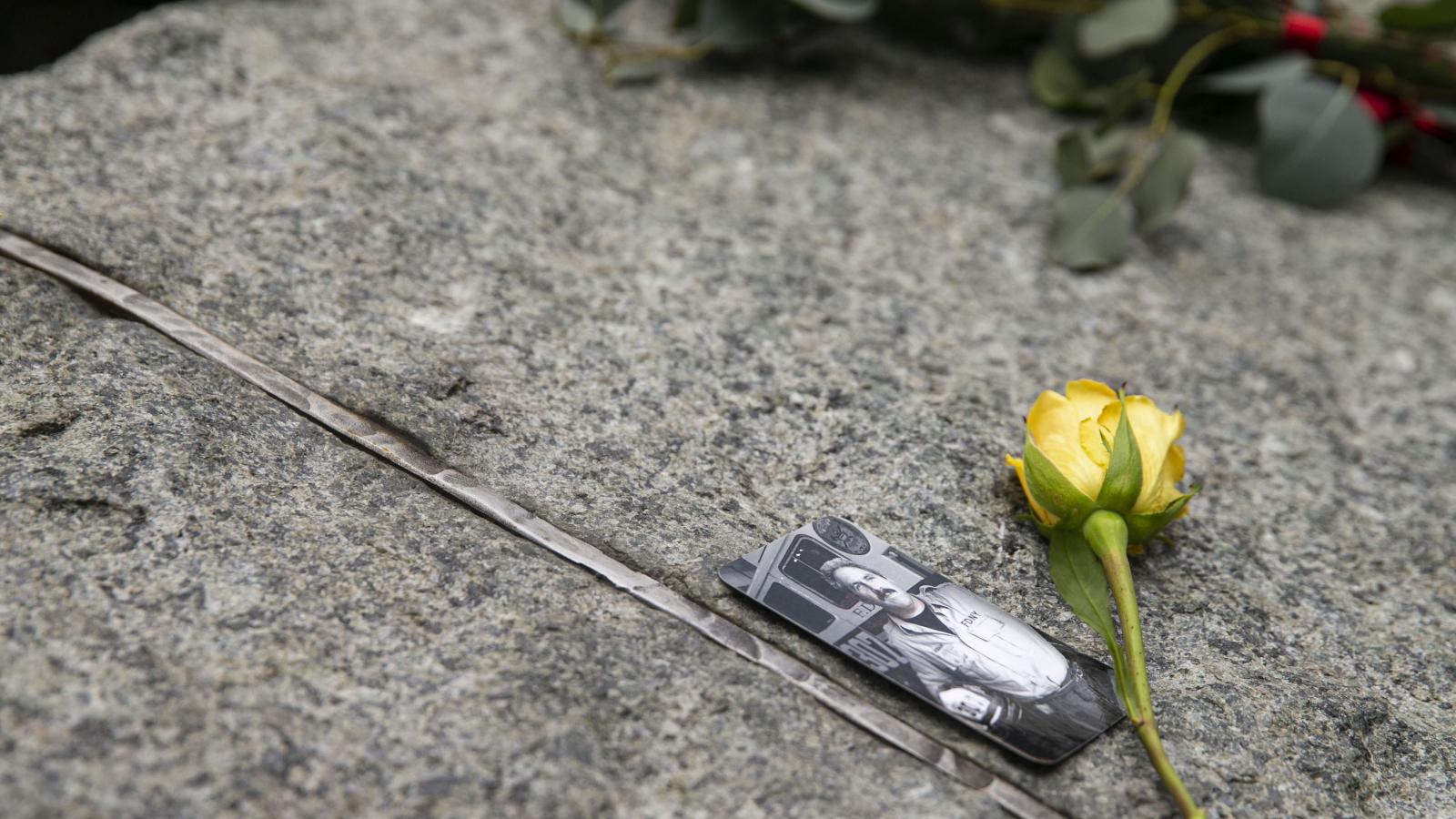Make a donation to the museum
9/11 Memorial Glade
In the aftermath of the 2001 terrorist attacks, tens of thousands of men and women from across the nation and around the world responded.
Facing a mountainous landscape of mangled and jagged steel at Ground Zero, and despite fires that burned for 100 days, rescuers and recovery workers toiled night and day for nine months. What began as a rescue operation turned into the grim work of recovering those who had been killed. Workers also had to remove nearly two million tons of debris. Through sheer determination, they paved the way for rebuilding. Their sacrifice would be met with suffering.
On the day of the attacks and throughout the recovery, hundreds of thousands—responders and survivors, workers and residents—were exposed to hazards and toxins in the air at and around the World Trade Center site, resulting in chronic illnesses and the deaths of thousands. Responders and workers at all three attack sites, including the Pentagon and in Shanksville, Pennsylvania, have been affected. For the injured, sick, and dying, and for their families and friends, 9/11 has remained an all-too-present reality.
The 9/11 Memorial Glade is dedicated in their honor.

The 9/11 Memorial's original architects, Michael Arad and Peter Walker, designed the Glade with the support of 9/11 Memorial & Museum board member Jon Stewart, 9/11-health advocates and providers, 9/11 family members, first responders, and lower Manhattan residents.
The Glade’s design includes a pathway flanked by six large stone monoliths, ranging from 13 to 18 tons, that are inlaid with World Trade Center steel accompanied by an inscription at either end of the pathway. Their design incorporates steel from the original World Trade Center site.
The Glade was dedicated on May 30, 2019, the 17th Anniversary of the official end of the recovery effort. It is located just west of the Survivor Tree, roughly where the primary ramp that was used during the rescue and recovery effort once stood. In the history of the World Trade Center, the Ramp played an essential role in allowing victims’ families to access the site following the attacks, as well as workers who removed debris and established a pathway for rebuilding.
The Glade’s inscription encapsulates its purpose:
This Memorial Glade is dedicated
To those whose actions in our time of need
Led to their injury, sickness, and death
Responders and recovery workers
Survivors and community members
Suffering long after September 11, 2001
From exposure to hazards and toxins
That hung heavy in the air
Here and beyond this site known as Ground Zero
And at the Pentagon
And near Shanksville, Pennsylvania
In the aftermath of the terrorist attacks.
Here we honor the tens of thousands
From across America and around the world
Who came to help and to heal
Whose selflessness and resolve
Perseverance and courage
Renewed the spirit of a grieving city
Gave hope to the nation
And inspired the world.
The 9/11 Memorial Glade’s six stone monoliths were installed on Saturday, April 6, 2019. This process required a 600-ton crane and an assist crane. Each monolith was lifted over the 30- to 35-foot-tall Swamp White Oak trees on the Memorial plaza and rigged inside the Glade construction site.
The monoliths were shaped by two craftsmen in Barre, Vermont, using large blocks of quarried granite. They used sledgehammers, chisels, and blowtorches to shape the stones into massive rough-edged monoliths. The monoliths were then driven six hours south on flatbed trucks through the Green Mountains and the rolling hills of New England to be placed on the site.
A team of eight personnel from the Vermont Division of Fire Safety escorted the trucks on their way to New York City. As the team assisted the trucks, local first responders in communities along the way saluted the monoliths on the highway overpasses to recognize the importance and national significance of this project. The monoliths were met by workers waiting to guide them safely to their permanent home in lower Manhattan.

As the focal point of the Glade, the monoliths’ rough edges and large size were created to honor the challenges faced by those whom the Glade memorializes. The plaza was prepared to support the weight of the monoliths through high-density Styrofoam, concrete, and steel rebar. This reinforcement is essential because the monoliths sit on the Glade directly above the 9/11 Memorial Museum, which extends 70 feet underground.
Within the construction site, workers laid the pathway stone (Verde Fontaine) around the monoliths. This stone, together with the modified irrigation and soil aeration systems, ensures that the trees, grass, ivy beds, and other landscape elements can thrive.
A specialty steel-casting foundry in Missouri created the final design element of the monoliths. At the foundry, recovered World Trade Center steel was melted down and formed to fit the fissures that were carved into the monoliths.
The design and construction of the 9/11 Memorial Glade was made possible with generous support from Bloomberg Philanthropies, Building Trades Unions, Gov. Andrew M. Cuomo and New York State, through its affiliates, as well as Brookfield, the Carson Family Charitable Trust, LANGAN, Rechler Philanthropy, Richmond County Savings Foundation, RXR, Dan and Sheryl Tishman, and United Rentals, Inc.
Generous support of cobblestones on the 9/11 Memorial Glade has been provided by ScottsMiracle-Gro in recognition of those affected by COVID-19, including 9/11 rescue and recovery workers, first responders, medical professionals, grocery workers, truck drivers, and all other essential workers on the frontlines of our nation’s response to the current global health crisis.
